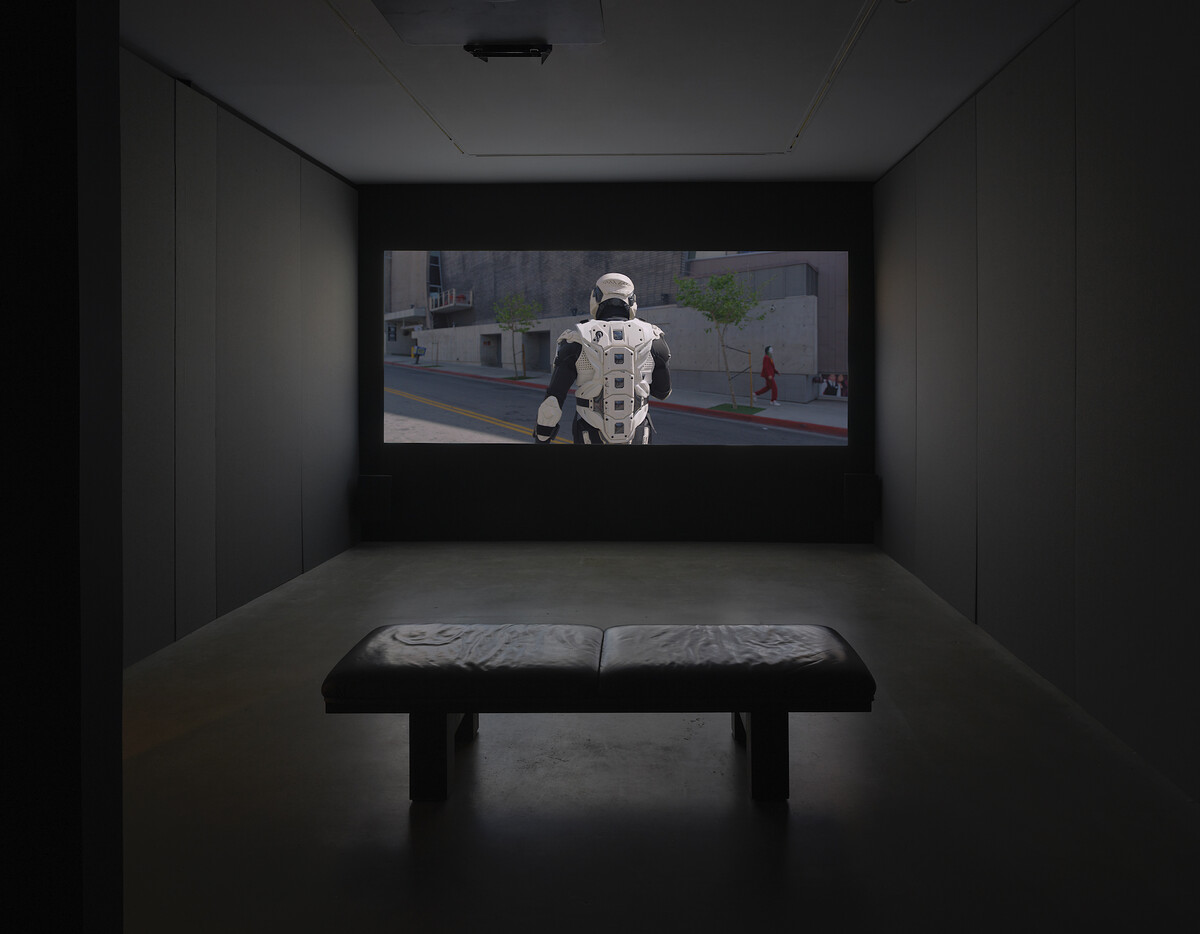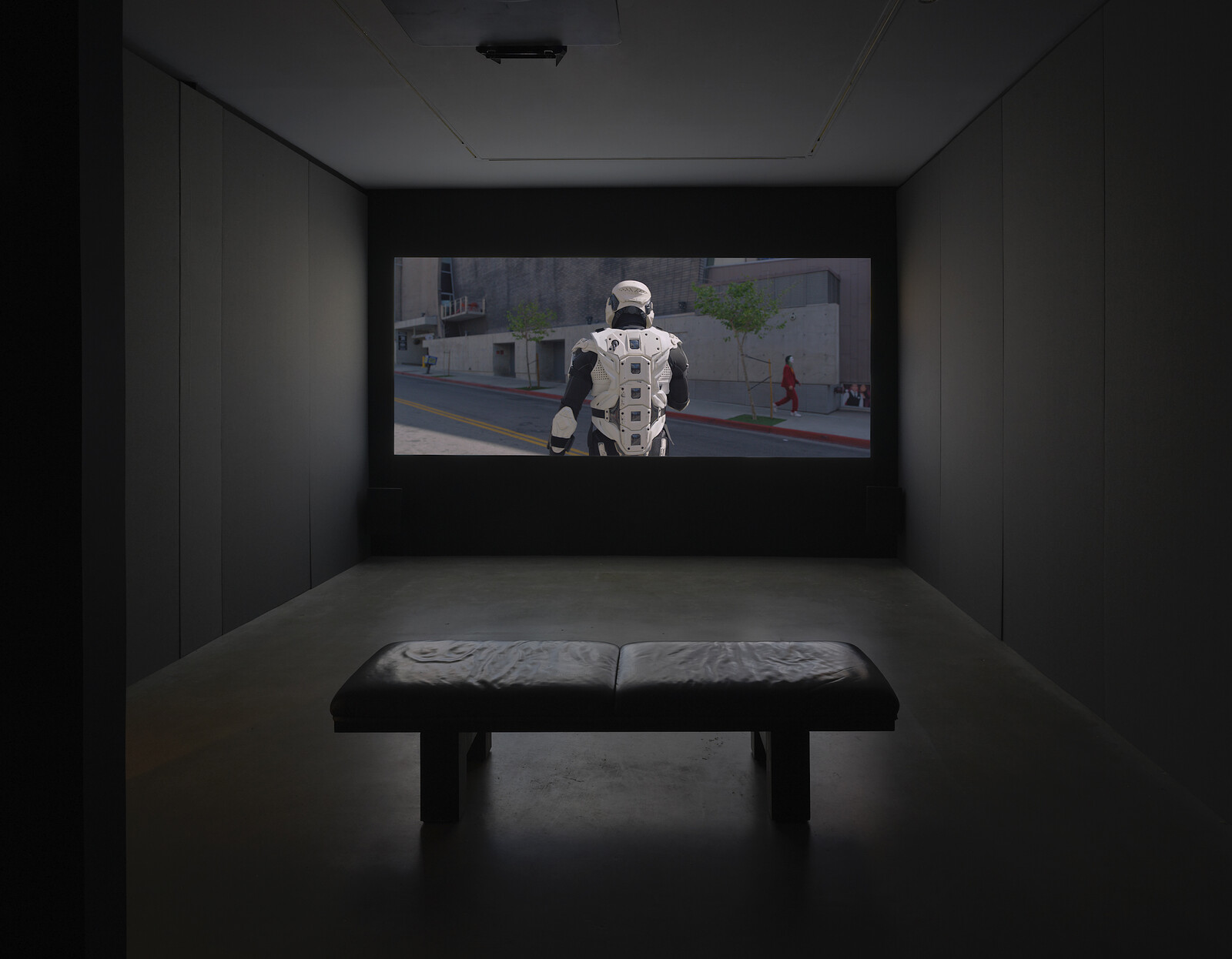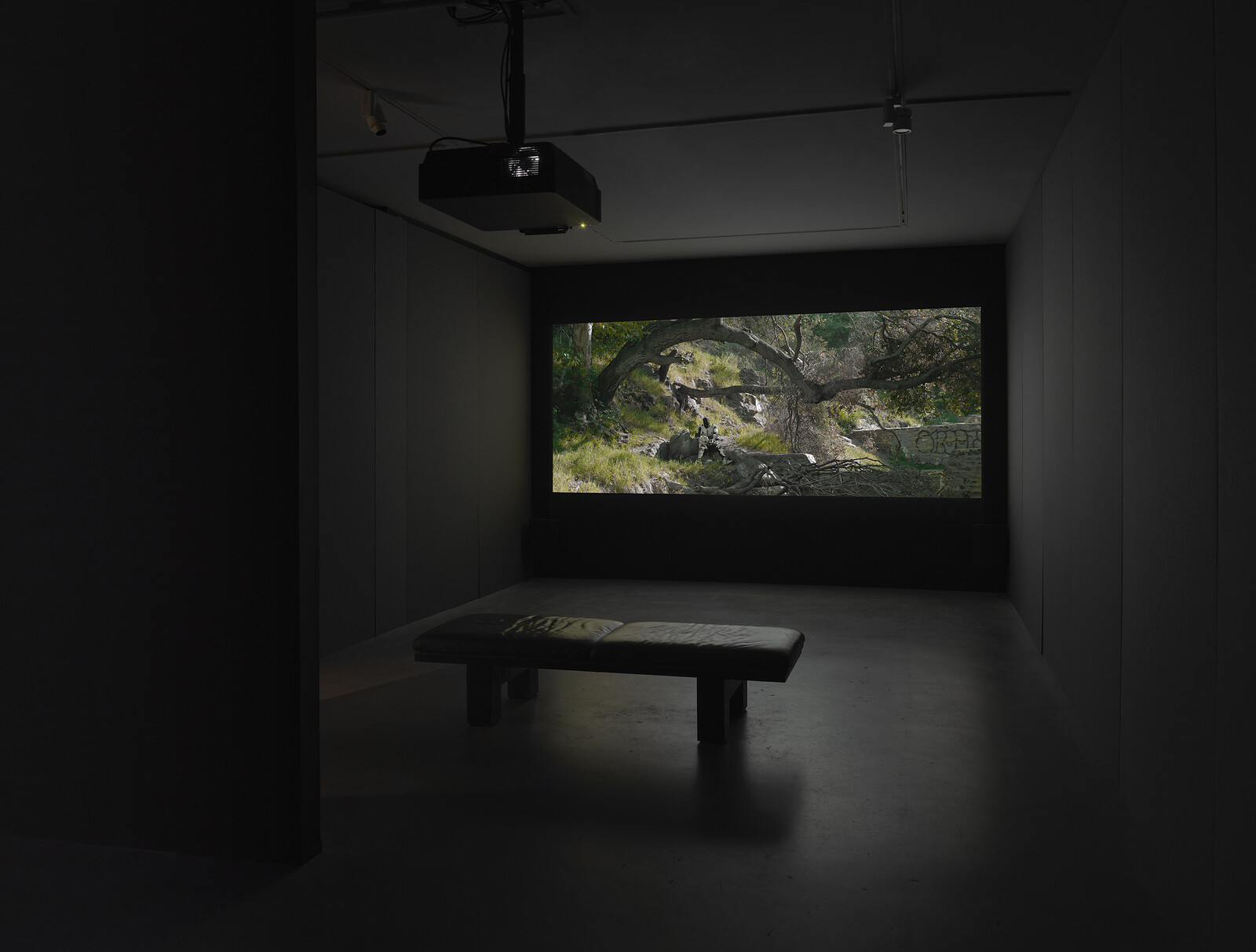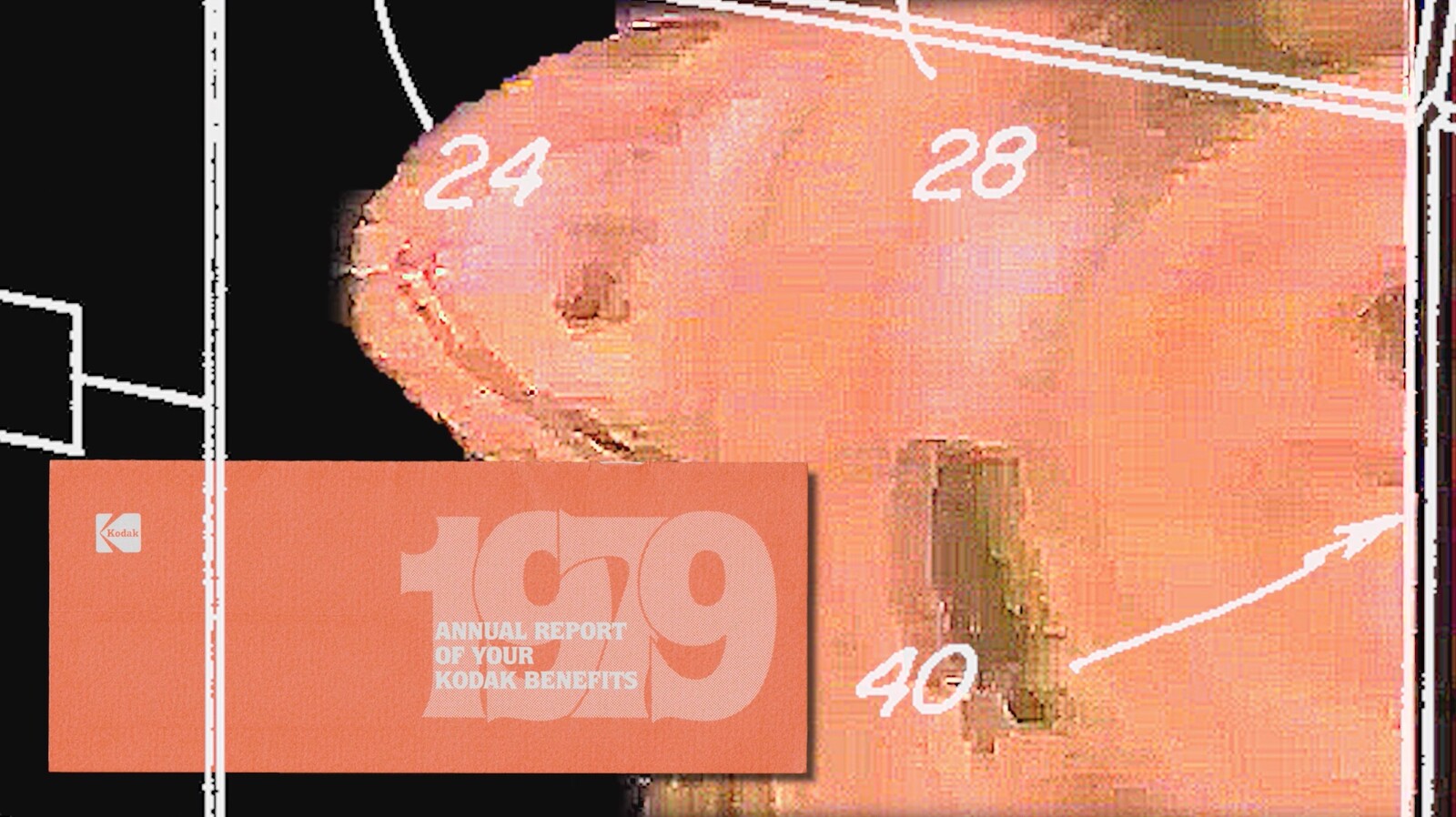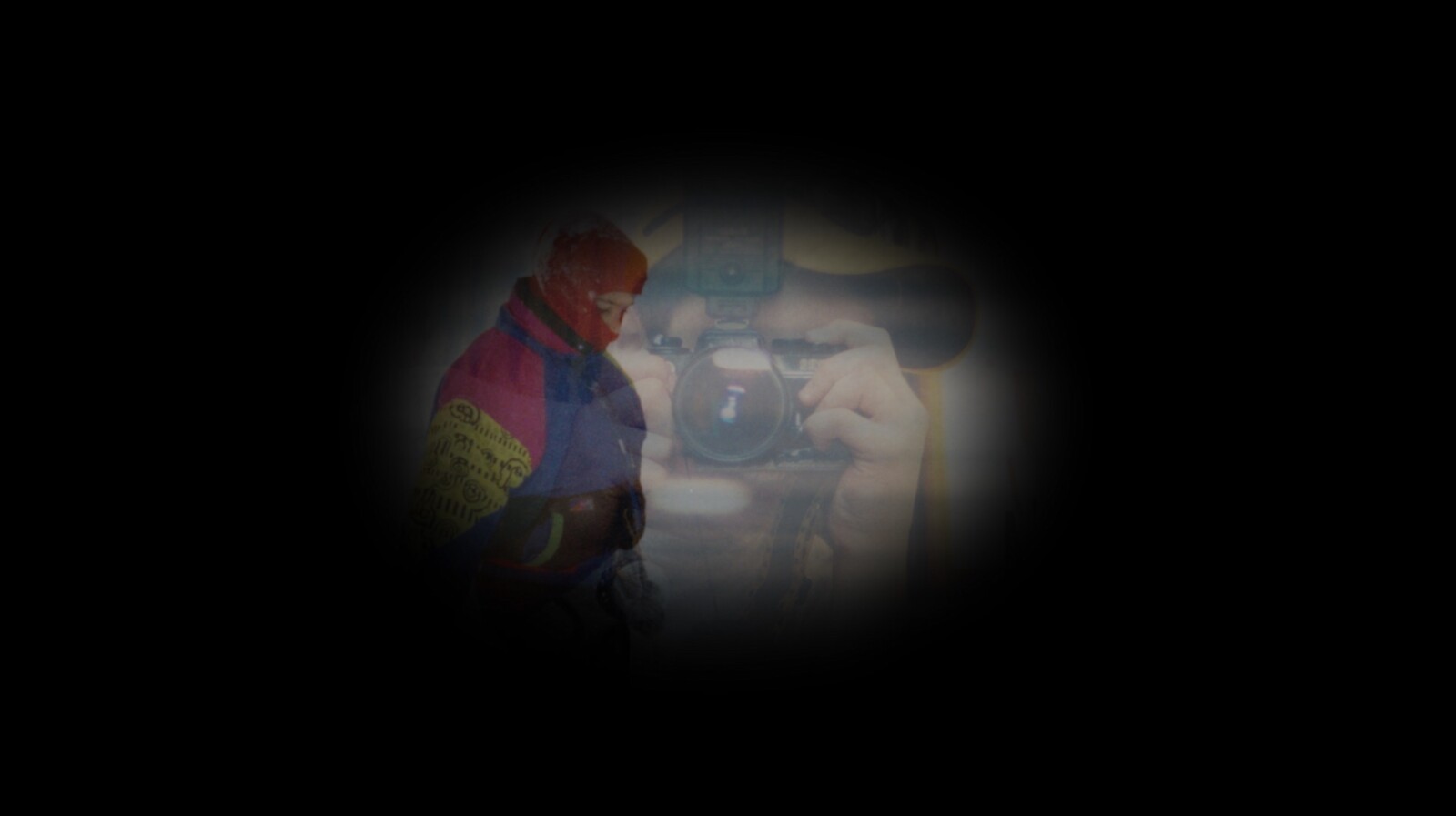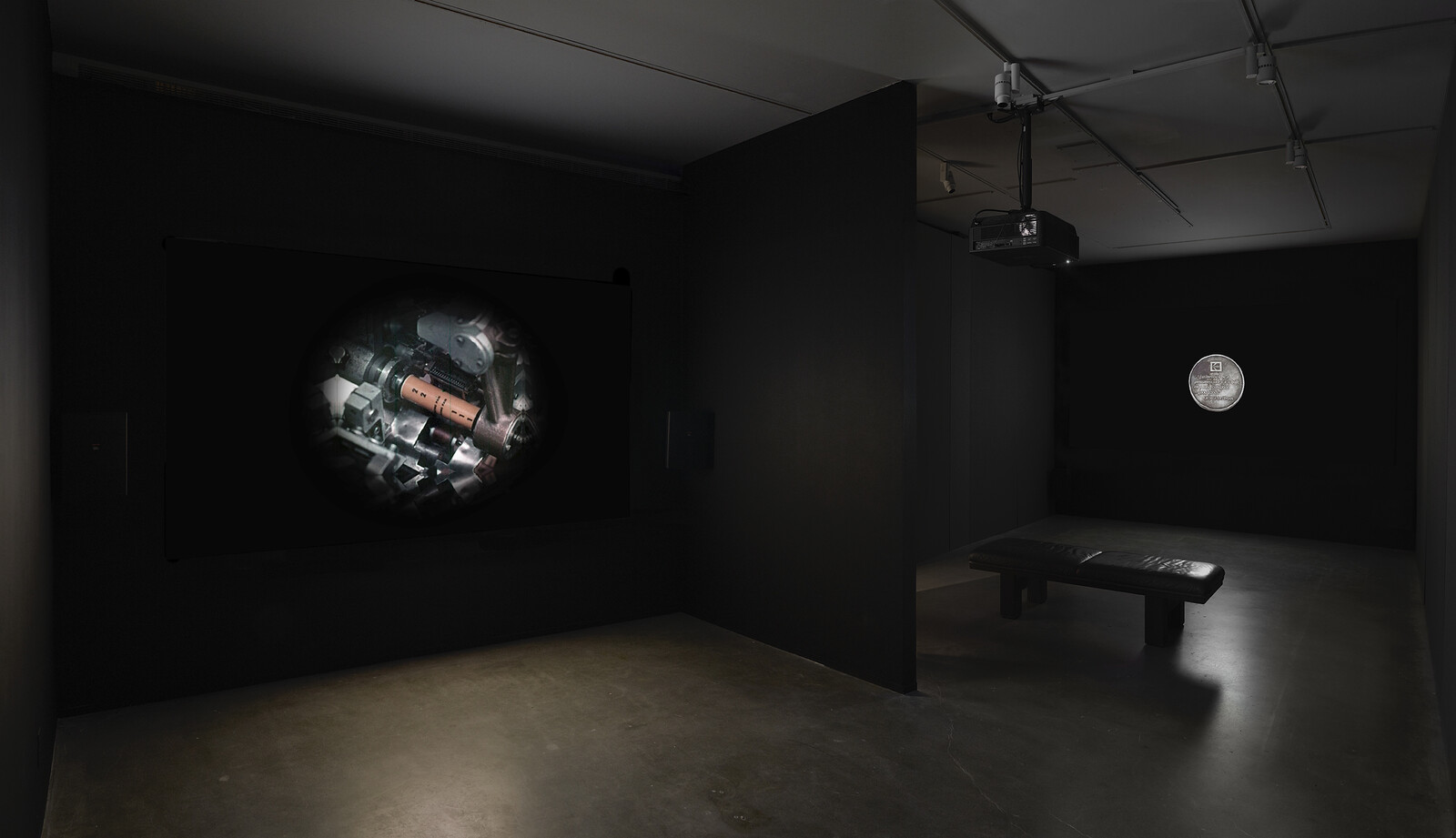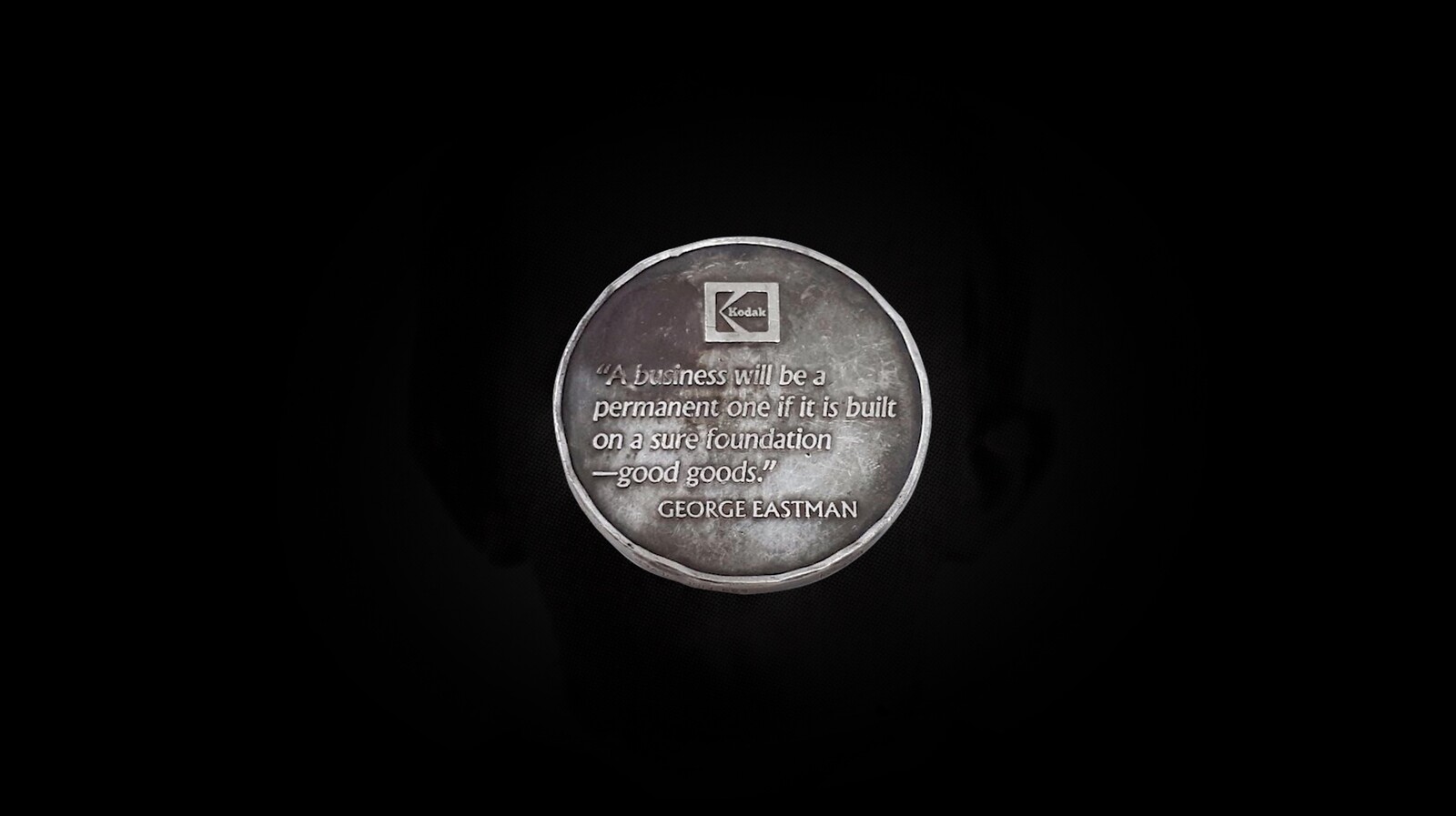Last month, a strike by over 60,000 members of the International Alliance of Theatrical Stage Employees (IATSE) was narrowly averted by last-minute negotiations with the Alliance of Motion Picture and Television Producers; the union will vote to ratify its new contract on Friday. This felt like a fitting backdrop for the opening of an exhibition which uses the tricks and trappings of the art world to make insidious labor politics slightly less ignorable. Andrew Norman Wilson’s solo presentation at the MIT List Visual Arts Center pairs two short features about workers navigating increasingly obsolete roles in corporate systems that produce mass media: the video Kodak (2019), a fictionalized account of a blinded former employee of the Kodak corporation, and Wilson’s new film Impersonator (2021), which follows a houseless, out-of-work character impersonator as he wanders the fringes of the Los Angeles film industry.
Wilson’s work treads the (often uneasy) territory between cinema and contemporary art. The two films, around 30 and 20 minutes respectively, play alternately on projection screens at either end of the List Center’s project space, which has been painted entirely black. Drawing techniques from documentary, montage, animation, and big-budget Hollywood, the works operate in a cinematic idiom that in length and sensory overload feel vaguely hostile to the traditional gallery setting, but their understated criticality profits from the framing the venue provides.
The protagonist of Impersonator wears a dirty stormtrooper-inspired costume for the duration of the film. In the opening scene he listens to a voicemail through a Bluetooth headset embedded in his helmet, which informs him that the credit card he’d used for an extended-stay hotel is going into debt collection. He wanders Hollywood listening to a call-in radio show hosted by a conspiracy theorist who claims to investigate “the points at which the entertainment industry meets intelligence services, the security state, the military, finance, organized crime, and even pedophile rings.” Following our proxy through the alternately picturesque and abject streets of the city—including a scene in which he watches his tent encampment be torn down by police—one is at once absorbed with empathy for this marginal, cast-aside figure, and disturbingly implicated by a perspective that feels something like voyeuristically watching, or even playing, a live-action, first-person video game. The narrative ends when the faceless actor collapses in a police station, perhaps with the hope of a meal, medical treatment, or a place to spend the night.
Kodak is a more impressionistic and decidedly less linear work, comprising interspersed elements of sound, animation, and still images that emerge from and fade back into a prevailing darkness. The backbone of the work is its audio, in which we hear the bumbling, aging narrator, Rich, shuffle through snippets from tapes allegedly recorded by Kodak’s founder, George Eastman, and respond to them as they jolt his fading memory and failing senses. Technical drawings and old advertisements float in and out across the screen, as do snapshots and home videos from the artist’s own family archive—a nod to the fact that Wilson’s father was a longtime Kodak employee and a partial inspiration for the character. A mention of silver gelatin triggers the appearance of a jellyfish, which Rich vaguely remembers as the only immortal being on earth. As the video progresses, the clips of Eastman’s narcissistic corporate-speak sound increasingly absurd and delusional as well, particularly when he describes management innovations like his new calendar, “the Eastman Plan: 52 weeks divided into 13 months.” Eventually the memory comes back to Rich of a workplace accident that left him blind, and the video devolves into a hallucinatory and abrasive animation sequence.
It can be difficult to separate Wilson’s works from the personal mythologies he weaves around them and the schemes he devises for their display. He’s premiered works on Reddit and proposed premiering them on chain-restaurant TV screens; he’s turned interviews, press releases, and artist talks into elaborate and darkly humorous polemics. Now, Wilson has announced that this moment marks his permanent transition from the art field to Hollywood, having decided that the economic precarity of being an early-career contemporary artist—involving food stamps, Medicaid, unemployment assistance, “borrowed” equipment, and creative tax filing—is no longer worth the struggle. “The dream has continued to reveal itself as a delusion, as if I’m the unpaid intern of Andrew Norman Wilson and he’s been gaslighting me for a decade,” he wrote recently.1 Whether or not this is entirely true seems beside the point. Wilson’s slippery practice contends that truly critical art cannot be made and shown by artists who must pay the bills with checks written by the institutions of capital, a double bind not dissimilar from the ones in which his videos’ protagonists are trapped. The two possible solutions he acknowledges to this problem—fighting for more crumbs or cutting bait—seem equally, depressingly unsatisfactory.
Andrew Norman Wilson, press release for “In the Air Tonight” at The Canary Test, Los Angeles, September 2021: http://www.thecanarytest.com/#/in-the-air-tonight.
